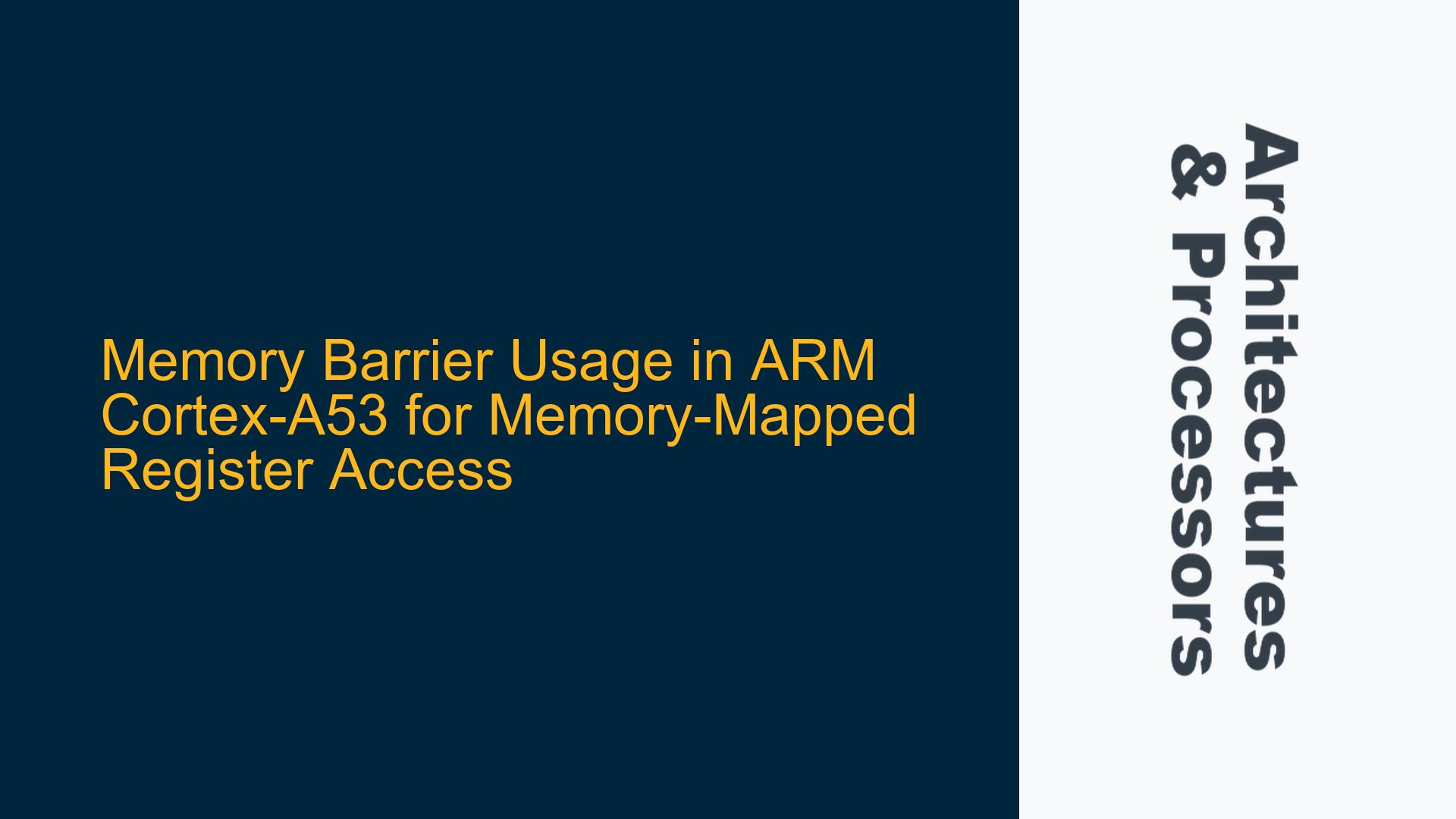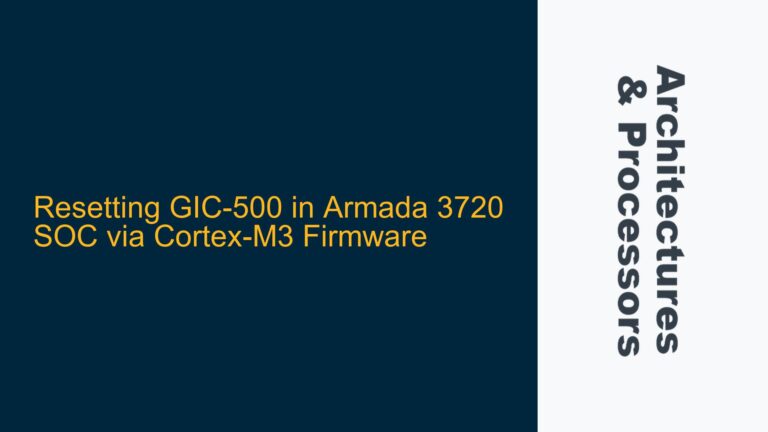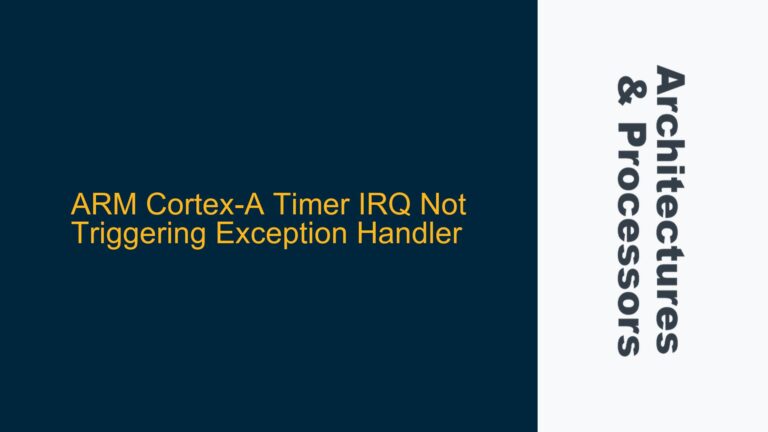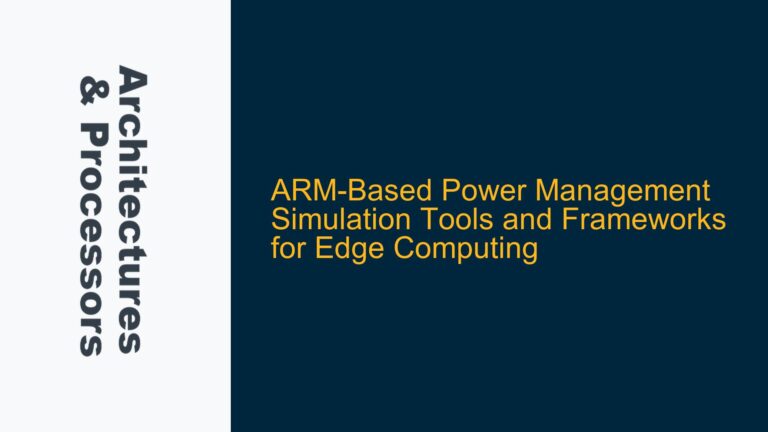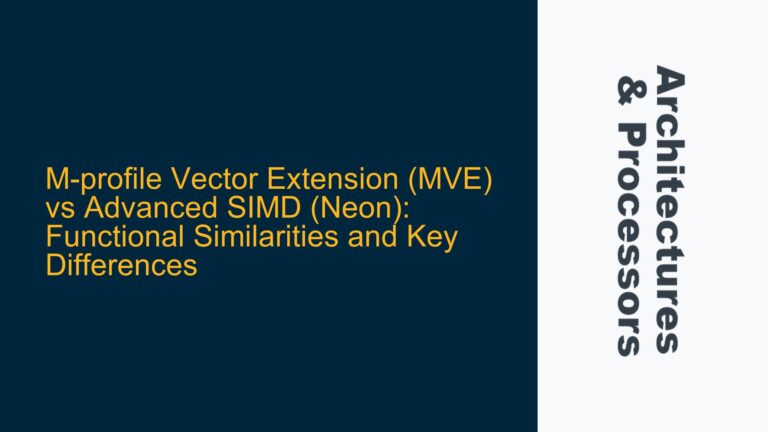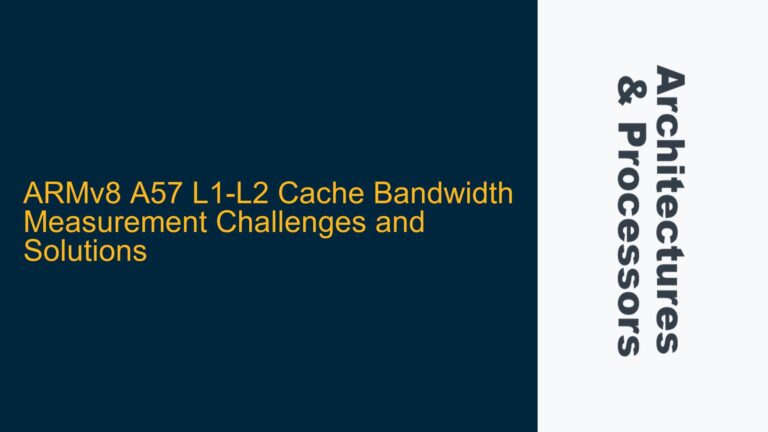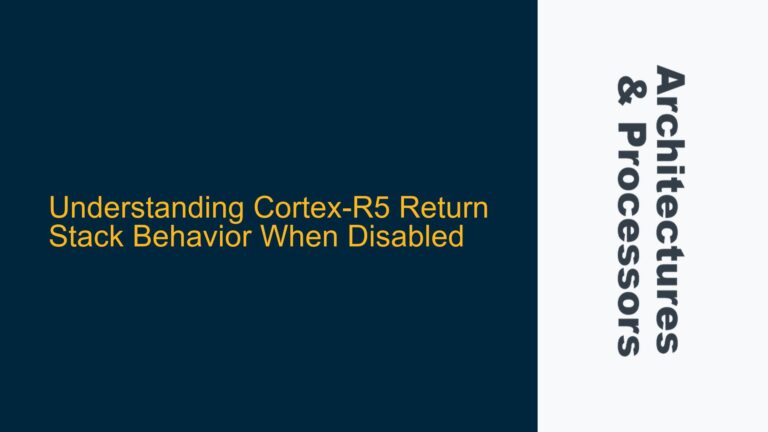ARM Cortex-A53 Memory Barrier Necessity After Peripheral Register Access
In embedded systems, particularly those utilizing ARM Cortex-A53 processors, the correct use of memory barriers is crucial for ensuring proper hardware-software interaction. The Cortex-A53, being a high-performance processor with out-of-order execution capabilities, can reorder memory accesses to optimize performance. This behavior, while beneficial for speed, can lead to subtle bugs when interacting with memory-mapped peripheral registers. The core issue revolves around whether a memory barrier is necessary after accessing a memory-mapped register, especially in the context of interrupt handling and peripheral control sequences.
Memory barriers, such as the Data Memory Barrier (DMB) instruction, are used to enforce ordering constraints on memory operations. In the context of peripheral registers, which are often mapped to Device or Strongly Ordered (SO) memory types, the necessity of a memory barrier depends on the specific memory attributes of the registers and the sequence of operations being performed. The Cortex-A53 architecture provides guarantees for ordering between certain types of memory accesses, but these guarantees are not always sufficient for all use cases, particularly when dealing with peripherals that have specific timing requirements.
Strongly Ordered vs. Normal Memory and Their Interaction
The ARM architecture defines different memory types, each with specific ordering guarantees. Strongly Ordered (SO) memory and Device memory are used for memory-mapped peripherals, while Normal memory is used for general-purpose RAM. The key distinction lies in how the processor handles accesses to these memory types.
Strongly Ordered and Device memory types have strict ordering requirements. Accesses to these memory types are not reordered with respect to each other, meaning that a write to a Device or SO memory location will complete before a subsequent read from the same memory type is issued. However, this guarantee does not extend to interactions between Device/SO memory and Normal memory. For example, a write to a Device memory location followed by a read from Normal memory can be reordered by the processor, potentially leading to incorrect behavior if the Normal memory access depends on the completion of the Device memory write.
The Cortex-A53 processor, like other ARM cores, uses a memory hierarchy that includes caches and write buffers. These components can introduce additional complexity when dealing with memory-mapped peripherals. For instance, a write to a peripheral register might be buffered and not immediately visible to the peripheral, leading to timing issues if subsequent operations assume the write has completed. In such cases, a memory barrier can be used to ensure that the write is flushed to the peripheral before proceeding.
The following table summarizes the ordering guarantees for different memory types in the ARM architecture:
| Memory Type | Ordering Guarantees |
|---|---|
| Strongly Ordered | Accesses are strictly ordered with respect to other SO and Device memory accesses. |
| Device | Accesses are ordered with respect to other Device and SO memory accesses. |
| Normal | Accesses can be reordered with respect to other Normal memory accesses. |
In the context of the Cortex-A53, the use of a memory barrier after accessing a memory-mapped register is necessary when the subsequent operation depends on the completion of the register access. For example, if a peripheral interrupt status register is read and the result is used to determine the next operation, a memory barrier ensures that the read operation is not reordered with respect to other memory accesses that might affect the interrupt status.
Implementing Data Synchronization Barriers for Peripheral Control Sequences
When dealing with peripheral control sequences, such as enabling interrupts and checking interrupt status, the use of memory barriers becomes particularly important. Consider a scenario where a driver enables interrupts in a peripheral by writing to an interrupt enable register and then immediately checks the interrupt status register to determine if an interrupt is pending. Without a memory barrier, the processor might reorder the read of the interrupt status register before the write to the interrupt enable register, leading to incorrect behavior.
In the Cortex-A53, the Data Memory Barrier (DMB) instruction can be used to enforce ordering between memory accesses. The DMB instruction ensures that all memory accesses before the barrier are completed before any memory accesses after the barrier are issued. In the context of peripheral control sequences, a DMB can be inserted between the write to the interrupt enable register and the read of the interrupt status register to ensure that the write completes before the read is performed.
The following code example illustrates the use of a memory barrier in a peripheral control sequence:
volatile uint32_t *interrupt_enable_reg = (uint32_t *)0x1000; // Interrupt enable register
volatile uint32_t *interrupt_status_reg = (uint32_t *)0x1004; // Interrupt status register
// Enable interrupts in the peripheral
*interrupt_enable_reg = 0x1;
// Insert a memory barrier to ensure the write completes before the read
__asm volatile ("dmb sy" : : : "memory");
// Check the interrupt status register
uint32_t status = *interrupt_status_reg;
if (status & 0x1) {
// Process the interrupt
}
In this example, the dmb sy instruction is used to enforce a full system memory barrier, ensuring that the write to the interrupt enable register is completed before the read from the interrupt status register is performed. This prevents the processor from reordering the operations and ensures correct behavior.
It is important to note that the necessity of a memory barrier depends on the specific requirements of the peripheral and the memory attributes of the registers. In some cases, the peripheral may have specific timing requirements that necessitate the use of a memory barrier, even if the memory types involved would otherwise guarantee ordering. For example, a peripheral might require a certain number of clock cycles to update its internal state after a register write, and a memory barrier can be used to introduce the necessary delay.
In conclusion, the use of memory barriers in ARM Cortex-A53 systems is essential for ensuring correct behavior when interacting with memory-mapped peripheral registers. By understanding the memory ordering guarantees provided by the architecture and the specific requirements of the peripherals being used, developers can implement robust and reliable control sequences that avoid subtle hardware-software interaction issues. The careful use of memory barriers, combined with a thorough understanding of the ARM memory model, is key to achieving optimal performance and reliability in embedded systems.
